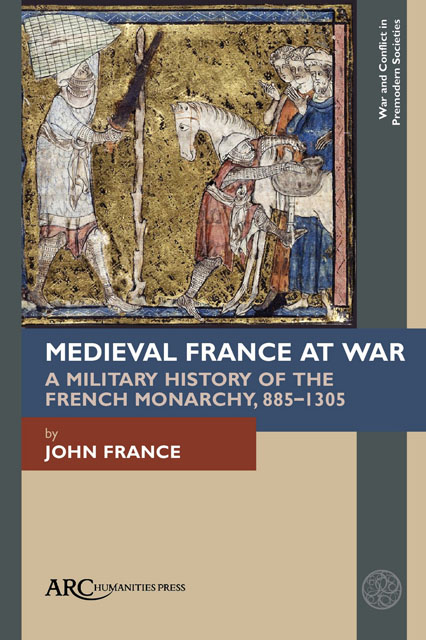Book contents
- Frontmatter
- Contents
- List of Illustrations
- Preface
- Introduction
- Chapter 1 Technology and Warfare
- Chapter 2 The Emergence Of France
- Chapter 3 French Monarchical Power in Context
- Chapter 4 Warfare In France To 1066
- Chapter 5 A Clash Of Dynasties 1066– 1180
- Chapter 6 Philip Ii and The Rise of France
- Chapter 7 The Expansion of France
- Chapter 8 Louis Ix and The Apogee Of French Power
- Chapter 9 The Problems Of Power
- Chapter 10 Perspectives on The Army of The Kings of France
- Bibliography
- Appendix: A Note on Sources
- Index
Chapter 1 - Technology and Warfare
Published online by Cambridge University Press: 06 April 2023
- Frontmatter
- Contents
- List of Illustrations
- Preface
- Introduction
- Chapter 1 Technology and Warfare
- Chapter 2 The Emergence Of France
- Chapter 3 French Monarchical Power in Context
- Chapter 4 Warfare In France To 1066
- Chapter 5 A Clash Of Dynasties 1066– 1180
- Chapter 6 Philip Ii and The Rise of France
- Chapter 7 The Expansion of France
- Chapter 8 Louis Ix and The Apogee Of French Power
- Chapter 9 The Problems Of Power
- Chapter 10 Perspectives on The Army of The Kings of France
- Bibliography
- Appendix: A Note on Sources
- Index
Summary
Preliminary Remarks
THE SUCCESS OF the armies of the kingdom of France did not rest on any notable advantage in arms, armour, or military equipment. There were differences between countries and districts, but technical development was very slow, and so these provided no special advantages. Moreover, there was only limited variation in the general nature of tactics. In these matters France closely resembled the other countries of western Europe. Armies were made up of cavalry and infantry, usually rendered in Latin chronicles milites et pedites. Milites simply means “soldiers,” but by the later tenth century it usually meant the paid bully boys of the great, the knights, who were the common and notable military men, quickly raised and at the disposal of their masters. Sometimes equites, “horsemen,” was used as a synonym for milites, emphasizing their preference for fighting on horseback, though it should be said that they were perfectly capable of fighting on foot. By that time they had become the embodiment of military power, distinguished by their expensive equipment, by being mounted on horses, which were very expensive animals, and by relatively intensive training. In any large expedition the infantry would be far more numerous, but far less well equipped.
To a modern eye, accustomed to seeing soldiers in uniform, a medieval French army would have been an untidy sight. Pictures in manuscripts tend to impose a degree of uniformity that simply did not exist. We have to remember that soldiers were supposed to bring their own weapons and armour to war. These were largely made of iron, which was difficult to extract and shape and, hence, very expensive. Weapons and armour would have been produced locally, for, although there were areas where iron was worked in quantity, for the most part supply was local. So self provision produced enormous variations both in appearance and quality. And most of the individual soldiers would have used hand me downs in one form or another. The two components of any army were the cavalry and the infantry, milites et pedites. Custom and law demanded that those who had to act as cavalry turned up with at least one good horse and a good set of armour and weapons, but only the great lords had the finest horses and the best and newest weapons and armour.
- Type
- Chapter
- Information
- Medieval France at WarA Military History of the French Monarchy, 885-1305, pp. 7 - 24Publisher: Amsterdam University PressPrint publication year: 2022

